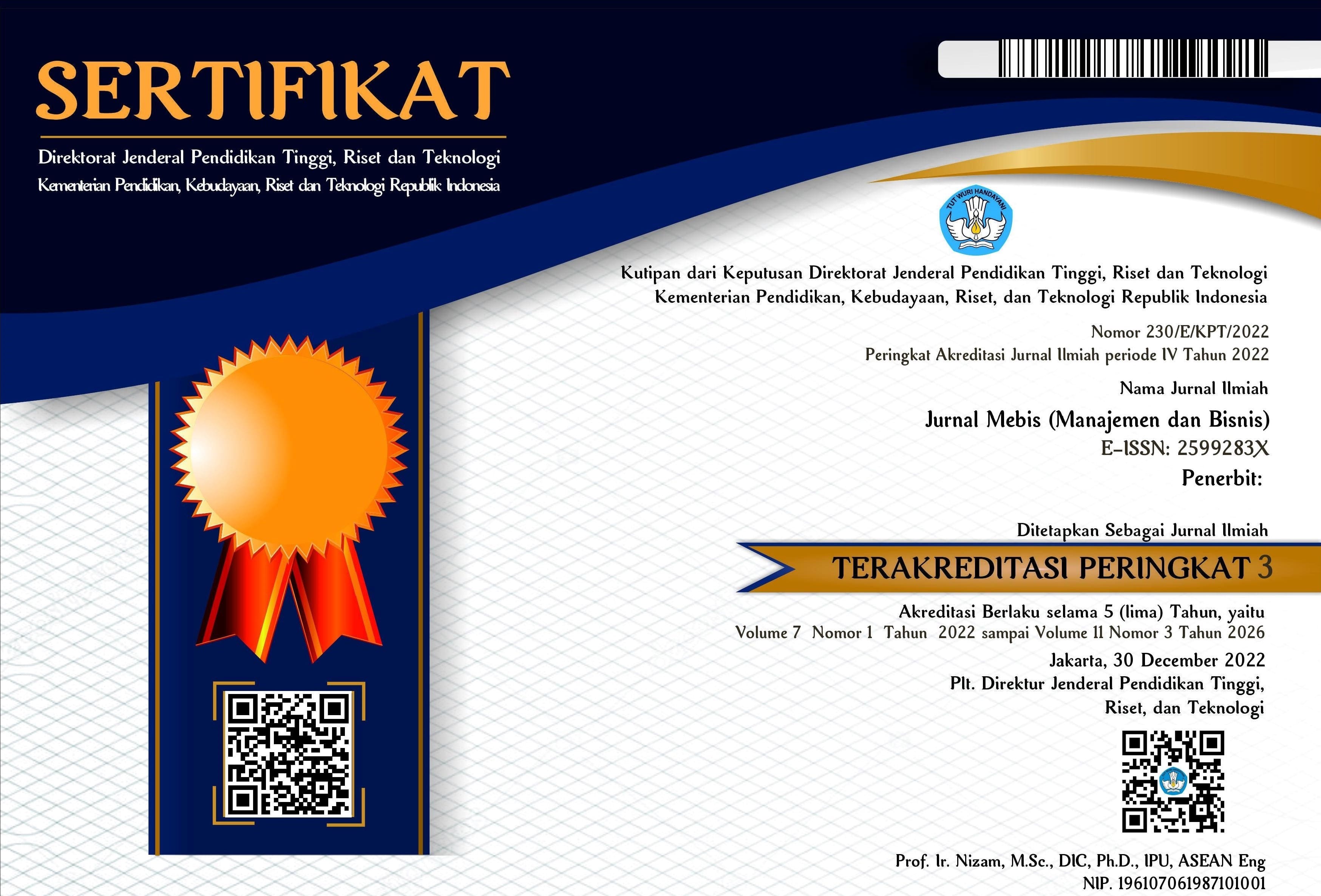The Digital HR Revolution: Rethinking Employee Satisfaction In Tech-Driven Work Environments
DOI:
https://doi.org/10.33005/mebis.v10i1.683Keywords:
Digital HR, Perceived Ease of Use, Perceived Usefulness, Organizational Support, Employee SatisfactionAbstract
In the wake of digital transformation, the integration of Human Resource (HR) technologies has become increasingly prevalent across various sectors. This study investigates the influence of three key factors—perceived ease of use, user comfort, and organizational support—on employee satisfaction within tech-driven work environments. The research was conducted across multiple organizations that have adopted digital HR platforms. Using a quantitative approach, data were collected through structured questionnaires distributed to 97 employees who actively utilize digital HR systems. In this study, the data were processed using SmartPLS 4.0. The findings reveal that all three independent variables significantly contribute to employee satisfaction. Perceived Ease of Use has a positive and significant effect on employee satisfaction. Perceived Usefulness has a positive and significant effect on employee satisfaction. Organizational support has a positive and significant effect on employee satisfaction.
Downloads
References
Alalwan, A. A., Dwivedi, Y. K., Rana, N. P., & Simintiras, A. C. (2016). Jordanian consumers’ adoption of telebanking: Influence of perceived usefulness, trust and self-efficacy. International Journal of Bank Marketing, 34(5), 690–709.
Analisa.daily. (2024). Mengenal Aplikasi HR, Jenis dan Fitur yang Ada Didalamnya. Analisa.Daily. https://analisadaily.com/berita/baca/2024/08/22/1054933/mengenal-aplikasi-hr-jenis-dan-fitur-yang-ada-didalamnya/
Chawla, D., & Joshi, H. (2019). Consumer attitude and intention to adopt mobile wallet in India–An empirical study. International Journal of Bank Marketing, 37(7), 1590–1618.
Cudjoe, A. G., Anim, P. A., & Nyanyofio, J. G. N. T. (2015). Determinants of mobile banking adoption in the Ghanaian banking industry: a case of access bank Ghana limited. Journal of Computer and Communications, 3(2), 1–19.
Davis, F. D. (1989). Perceived usefulness, perceived ease of use, and user acceptance of information technology. MIS Quarterly, 319–340.
Fitri, N. (2007). Pengaruh Persepsi Dukungan Organisasi dan Kepuasan Kerja Terhadap Komitmen Pegawai Administrasi Politeknik Negeri Medan. Universitas Sumatera Utara.
Ghozali. (2015). Partial Least Squeres Konsep, Teknik dan Aplikasi Menggunakan Program SmartPLS 3.0 Untuk Penelitian Empiris. Badan Penerbit Universitas Diponogoro.
Indarsin, T., & Ali, H. (2017). Attitude toward Using m-commerce: The analysis of perceived usefulness perceived ease of use, and perceived trust: Case study in Ikens Wholesale Trade, Jakarta–Indonesia. Saudi Journal of Business and Management Studies, 2(11), 995–1007.
Mandasari, C. S., & Giantari, I. (2017). Pengaruh perceived usefulness, perceived ease of use, dan kualitas layanan terhadap kepuasan untuk membangun loyalitas. E-Jurnal Ekonomi Dan Bisnis Universitas Udayana, 10(6), 3637–3664.
Nasution, N. K. (2024). Pengaruh inflasi dan non performing financing terhadap profitabilitas bank umum syariah di Indonesia periode 2019-2023. UIN Syekh Ali Hasan Ahmad Addary Padangsidimpuan.
Raharjo, A. T., & Prasetyo, A. (2016). Analisis pengaruh kemudahan penggunaan sopp terhadap kepuasan kerja pegawai dengan pendekatan TAM. Jurnal Sistem Informasi, 5(2), 129–138.
Statistik, B. P. (2024). Badan Pusat Statistik. Badan Pusat Statistik. https://www.bps.go.id/id
Tojib, D., & Tsarenko, Y. (2012). Post-adoption modeling of advanced mobile service use. Journal of Business Research, 65(7), 922–928.
Venkatesh, V., & Davis, F. D. (2000). A theoretical extension of the technology acceptance model: Four longitudinal field studies. Management Science, 46(2), 186–204.












